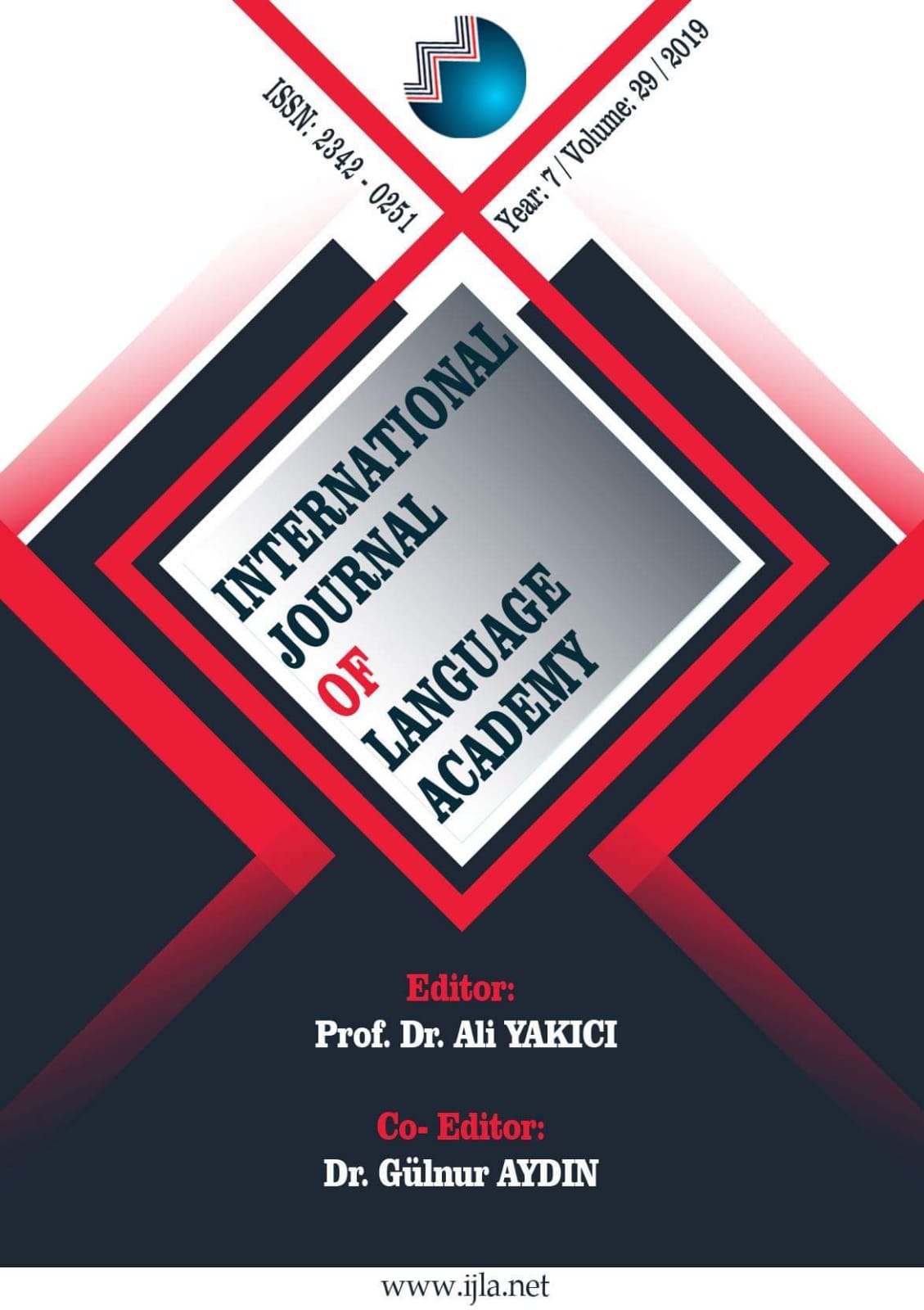THE EFFECT OF FLIPPING CLASSROOM STRATEGY ON THE ATTITUDES OF THE IRAQI 6TH PREPARATORY STUDENTS TOWARDS ENGLISH SUBJECT
Author :
Abstract
This study aims at investigating the effect of flipping classroom strategy (FCS) on the Attitudes of the 6th Preparatory Students towards English Subject. The 70 participants of the study are chosen from Himreen secondary school for boys/ the representation of ministry of Education in Erbil. The aim was to study the effect of flipping classroom strategy. To achieve the aim of the study, the two groups were statistically equalized in some variables. The experiment lasted two weeks during which the experimental group was taught by adopting FCS while the control group was taught by the ordinary method. The instrument of the study was a scale constructed by the researcher to measure students’ attitudes towards English Subject. By using t-test formula, the results have showed that there is a significant difference in the students' attitudes between the experimental group and the control group in favour of the experimental one. This difference can be attributed to the use of FCS.
Keywords
Abstract
This study aims at investigating the effect of flipping classroom strategy (FCS) on the Attitudes of the 6th Preparatory Students towards English Subject. The 70 participants of the study are chosen from Himreen secondary school for boys/ the representation of ministry of Education in Erbil. The aim was to study the effect of flipping classroom strategy. To achieve the aim of the study, the two groups were statistically equalized in some variables. The experiment lasted two weeks during which the experimental group was taught by adopting FCS while the control group was taught by the ordinary method. The instrument of the study was a scale constructed by the researcher to measure students’ attitudes towards English Subject. By using t-test formula, the results have showed that there is a significant difference in the students' attitudes between the experimental group and the control group in favour of the experimental one. This difference can be attributed to the use of FCS.
Keywords
- Ahmed, M.(2016). The Effect of a Flipping Classroom on Writing Skill in English as a Foreign Language and Students’ Attitude Towards Flipping.Journal of US-China Foreign Language, 14 (2).
- Al-Burkani, N. (2008). The Effect of six Hats Strategy on the achievement of the 3rd intermediate female Students in Mecca. Unpublished M.A. Thesis, De Bono Centre.
- Al-Kubaisy, Abdul Wahid.(2007). Some of the Basics of University Teaching. 1st ed. University of Anbar: center of Methods of Teaching.
- Al-Khalifa, H. and Mutawa', D. (2015). Strategies of Active Learning. 3rd. Al-Mutanabi Bookshop.
- Al-Nabhan, M.( 2004). The Basics of Measurement in the Behavioral Sciences. Amman, Jordon: Dar Al-Shurooq.
- Al-Temimi, S. (2000). The Appopriateness of Techniques used by Instructors of Literature in Reinforcing the Learning of Language Skills. Unpublished M.A. Thesis, University of Baghdad.
- Al-Zain, H.(2015). The Effect of Using Flipped Learning Strategy on The Academic Achievement of The Students in Education Department. Journal of Education, 4 (1).
- Atallah, M. (2010). Methods and Styles of Teaching Science. Amman,Jordan: Dar Al- Maseera for printing and publishing.
- Baker, J. W. (2000). The Classroom Flip: Using web Course Management Tools to become the Guide by the Side. In J. A. Chambers, Selected papers from the 11th International Conference on College Teaching and Learning. Jacksonville, FL: Florida Community College at Jacksonville.
- Barak, M. and Shakhman, L.(2008). Fostering Higher-Order Thinking in Science Class: Teachers’ reflections. Teachers and Teaching: Theory and Practice, 14(3).
- Bishop, J. and Averleger, M. (2013). The Flipped Classroom: A survey of the research. 120th ASEE annual conference and exposition. American Society for Engineering Education.
- Brame, Cynthia J. (2013). Flipping the classroom. Vanderbilt University for Teaching.
- Brooks, J. & Brooks, M.(1999). In search of Understanding: The Case for Constructivist Classrooms. Alexandria, VA: Association for Supervision and Curriculum Development.
- Glass, G. V.,and Stanley,J.C.(1970). Statistical Methods in Education and psychology. Englewood Cliffs New Jersey: Prentice – Hall, Inc.
- Harrison, B. (1973). English as a Second and Foreign Language. London:Longman.
- Johnson, G. (2013). Student Perceptions of the Flipped Classroom. Unpublished M.A. Thesis,University of Coppin State.
- Johnson, L. (2012). Effect of The Flipped Classroom Model on a Secondary Computer Applications Course: Student and Teacher Perceptions, Questions and Student Achievement. Unpublished M.A. Thesis, University of Louisville.
- Li, L. (2013). The Application of Flipping Classroom Model in English Language Teaching Flipped Classroom, Model in English Teaching. The Youth Writers, 20 (6).
- Randall S., Douglas L.and Dean, N. (2013). Flipping the Classroom and Instructional Technology Integration in a College- level Information Systems Spreadsheet Course. Educational Technology Research and Development, 61(4).
- Ryan, M.(1963). Teaching the Novel. New York: the Macmillan Company.
- Salasar, N. (1999). A New Approach to Teaching Literature. Forum, 30(2).
- Shimamoto, D. (2012). Implementing a Flipped Classroom: An Instructional Module. Technology, Colleges, and Community Worldwide Online Conference. http://scholarspace.manoa.hawaii.edu/handle/10125/22527
- Stem, S. (2008). Expanded Dimensions to Literature in English as a second Language and English as a Foreign: An Integrated Approach. Forum, 25(4).
- Strayer, J. (2007). The Effects of the Classroom Flip on the Learning Environment: A Comparison of Learning Activity in a Traditional Classroom and a Flip Classroom that used an Intelligent Tutoring System. Doctoral Dissertation. Retrieved from Proquest UMI.
- Sung, K. (2015). A Case Study on A Flipped Classroom in an EFL Content Course. Multimedia- Assisted Language Learning, 18(2).
- Talbert, R. (2012). Inverted Classroom. Colleague, 9(1). Retrieved from http://scholarworks.gvsu.edu
- Wiersma, A. (2008). A Study of the Teaching Methods of High School History Teachers. The Social Studies, 99(3).





